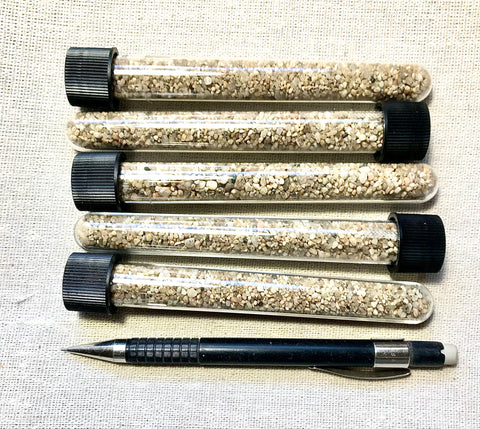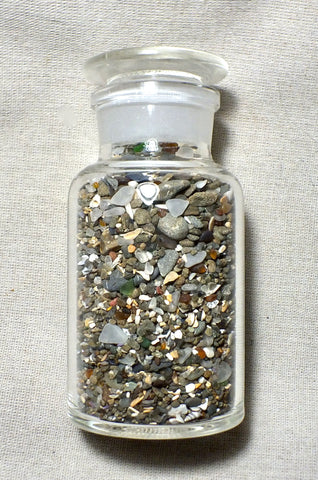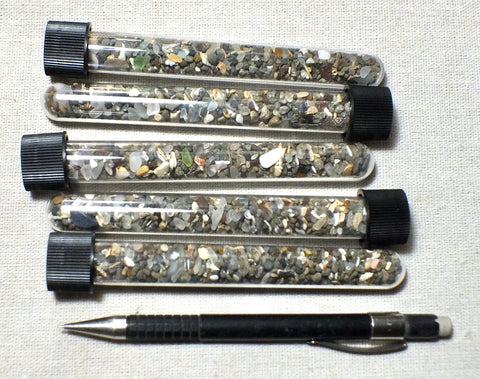sand - large-grained quartz dune sand from Monastery Beach, Carmel Bay, California - set of 5 tubes
$ 8.55
This sand is interesting because of the large size of its quartz grains for a dune sand. Monastery Beach is fed sand immediately by San Jose Creek and by the Carmel River farther north.
The longshore current that moves sand from north to south along California’s coast contributes to this beach, but the size and irregular shapes of these grains tells us that the primary source must be a local and not particularly long drainage, most likely San Jose Creek, which feeds the beach directly.
Strong westerly wind picks up the sand, moving it to form low dunes at the landward side of the beach. A line of trees and dense shrubbery stops the movement of the dunes before they encroach on Highway 1, the Cabrillo Highway, which parallels the coast here. At its south end, Monastery Beach bumps up against Point Lobos.
Set of five tubes, 16 ml each, optically clear polystyrene with screw caps. The plastic tubes are practical in a classroom and are somewhat student resistant, though a cap can be unscrewed.
Question for students:
Which is the most likely source of this sand, the Carmel River several miles north, or San Jose Creek and why do you say so? San Jose Creek, because the grains are relatively large and not well rounded. If they had been transported farther, down the Carmel River and then down the coast to this beach, they would be rounded and smaller. San Jose Creek feeds the beach directly.
If you compare this with sand derived from the Navajo Formation, how do these sands differ? The Navajo sand grains are well rounded and much smaller. They have a red iron oxide coating. Each grain is frosted, which you can see under 20x magnification. The Monastery Beach dune sand has much larger grains, they are not frosted or stained.
Why are the Navajo derived sand grains so much smaller? Answer this after you read the notes on the Navajo sandstone-derived sand. That sand was transported very much farther, across the continent from the Appalachians. The grains were blown against each other in a huge dune field, becoming frosted and even smaller. The Monastery Beach sand came down a creek, so travel was short and the grains didn't move far enough to become small and rounded.
If you came close with your answers, pat yourself on the back.
Shipping: By Priority Mail or USPS Ground Advantage, whichever is cheaper, unless we find a better rate. Click > here< for shipping rates. Use back button to return to this page.
Making multiple purchases? Click on the "combine shipping" button in the shopping cart. We'll send an invoice with combined shipping. A link in that invoice will bring you back to checkout, no hassle.







